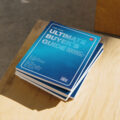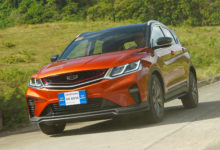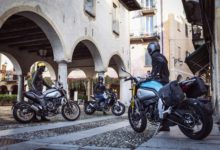Archive Car Reviews Aston Martin Car Reviews October 27, 2018 By Kevin C. Limjoco
2017 Aston Martin DB11 V12
The new super GT standard
The Aston Martin DB11 in Tokyo, Japan-
Cue in Nancy Sinatra’s alluring theme song of the same movie title, “You Only Live Twice.” as you start

Behold the all-new and most critical Aston Martin in over a decade, the DB11! Sure James Bond never actually drove an Aston Martin in Japan, in fact the most important car used in the 1967 blockbuster film was a bespoke Toyota 2000GT. But I simply loved the parallels. James Bond’s Sean Connery had the lovely Aki character to take care of him; we have the beautiful Hiromi Sakamoto of Aston Martin Japan to take care of us. Bond’s climactic battle ended in an extinct volcano in Kirishimu National Park near to Kagoshima; our climactic end of testing the new DB11 was at Karuizawa on an elevated plain at the foot of the very active volcano Mount Asama. The “good guy” in our adventure was Iñigo Roces who spent the most time behind the quadric steering wheel of the DB11; so I guess I’m Ernst Stavro Blofeld, his nemesis.
echo adrotate_group(2);
I wanted to have as clean a slate as possible in my mind before I got my opportunity to drive the DB11 so I actually avoided physical contact on the first day, even if just looking at it as the DB11 came up the car-lift at the Japan office made my heart swoon. On the second day, I chose to drive the 568 bhp / 465 lb-ft Aston Martin V12 Vantage S for the first leg to get one more lasting taste of the old generation which still accelerates from 0-100 km/h in 3.9 seconds and has a top speed of 330 km/h. Looking at those performance figures, I was a touch concerned that it matched the acceleration of the DB11 and is actually a bit faster with a slightly higher top speed. So, is the DB11 more about looks and drama? No, it is exponentially more than that. It is a car that will haunt your dreams and push you to work even harder to achieve it.

When I finally got my turn, I took the process in slow motion. Without a doubt, by sheer appearance alone the DB11 is arguably the most beautiful car on the planet. The next thing I did was explore the new interior materials used. The older and current generation cars always had handsome interiors, but the DB11 has them all beat by a huge margin. Once I sat on the ultra-comfortable yet supportive driver’s seat, I knew I was in for a real soulful experience. The Vantage S was accurately a proper sports car with less forgiving ride and seat comfort, but it had that raging normally aspirated V12 and massive carbon ceramic brakes to harness all the ponies. Before igniting the engine, I was expecting to be handed the glass key that has been a signature for Aston Martin, but instead was handed a bulky and fairly weighty key that obviously won’t be able to be slot-in to the center console reservoir like in any other current production car from Gaydon. So instead, you either keep it in your pant pocket where most smart keys go from any other car with the keyless entry feature which I suggest, or drop it into the powered center armrest. If you want to drive off quietly, you hold the ignition down for a few seconds until it ignites the engine in its most demure setting, but if you want to awaken the all-new bi-turbo V12 to its full voice, you press the same ignition button quickly. I like that we have a choice, but naturally for this introductory test, I always want the full bark off the bat. The DB11 has an abundance of active details that may be taken for granted from the simple automated trunk to the twin hood latches that have electric claws that grab the two corners and draw it shut after you drop the hood.

Once on the way, and taking into consideration that Japanese roads are exemplary, the DB11 rode with taut grace. You get the immediate feeling of strength in the all-new riveted and adhesive-bonded aluminum chassis, but you also get the almost magical ride compliance. The DB11 has the future of the brand and its people depending on its success and I am very confident that it will be. The synergy with Mercedes-Benz is obvious without taking anything away from Aston Martin which is an astonishing feat. After several hundred kilometers in the DB11, I think Mercedes-Benz may have even actually compromised themselves a smidgen. You would have to buy the 621 bhp AMG S65 Coupé to take on the DB11 dynamically and you still won’t have the charisma and chutzpa of the Briton.

The infotainment system control, some switchgear, and the crisp display screens, from the full-color 12″ TFT LCD instrument cluster to the second, centrally-mounted 8″ TFT screen (all the graphics are unique to Aston Martin, of course) are from Daimler, so you know they will work reliably well. And that is what you see and feel. What you don’t see are the wiring harnesses and other electronic devices from Mercedes-Benz that support the entire coupé underneath all the glorious leather, insulation, and skin. Our pre-production test unit had the awesome 1000-watt Bang & Olufsen BeoSound Audio System too for the short periods in traffic when I couldn’t enjoy the pure mechanical cacophony of the potent and lusty V12. The new signature LEDs on both ends are lovely too; beautiful and functional like everything else in the car. The generous, single-piece wood interior trim sections on the swan doors and center console reminded me more of Rolls-Royce than any other brand. Think of the entire packaging of the DB11 as organic high technology with personality.

The Aston Martin DB11 is a large and very sensual coupé that can be enjoyed on the road as well as on the track, though it is truly best enjoyed on fast, long distance transcontinental journeys where you can explore all the very deep abilities in total immersive comfort. Thankfully, you can adjust the three-stage active suspension independently from the throttle/transmission settings on the steering wheel so you can really tailor the car to your unique needs. The ubiquitous 8-speed ZF gearbox is once again on assignment for good measure, and dependably it works here with smoothness and quick shifting when you need it to be especially when you use the paddles. The V12 also has cylinder deactivation to help save fuel that engages at lower engine speeds, switching from one bank to the other happening every 20 seconds or so to keep the catalytic converters at the correct temperature. The brakes work great in the DB11 so you don’t need carbon ceramic discs unless you expect to track the car often. Aston Martin employed some real cool and unique aerodynamic features to the DB11, which they call “Curlicue”, that reduces front lift, and “AeroBlades” which handle the rear; both use clever winglets, splitters and gills to rechannel air, reduce turbulence, and essentially keep the car firmly planted at all times. There is also an active rear spoiler which pops up beyond 150 km/h for additional downforce. The new features help create bespoking opportunities as well, on top of the already extensive list of possible permutations to please every potential buyer.

In all, the all-new DB11 is everything that Aston Martin worked so hard to craft, design, and engineer to be. It is the very best of the best. It may not have the opulence and space of a Rolls-Royce Wraith but then again, the DB11 is a lot easier to attain and drive euphorically every day accompanied with a glorious mechanical orchestra. It is the most complete premium grand touring coupé that has all the essential ingredients to make it rewarding without ever thinking about James Bond. Instead, you create your own narrative and adventures in a painfully beautiful car that will confidently perform whether you’re ripping through the air at over 300 km/h or mildly cruising through a scenic country road.





















![]()




Specifications
Engine
| Engine | V12, 60° |
|---|---|
| Location | Front-Mid-Mounted, Longitudinal |
| Displacement | 5204 cc |
| Cylinder Block | Cast Aluminum |
| Cylinder Head | Cast Aluminum, DOHC, 4 valves per cylinder, Stop/Start Cylinder De-Activation, Dual Variable Camshaft Timing, Water-to-Air |
| Fuel Injector | Port Fuel Injection with Electrically controlled exhaust system |
| Max Power (bhp @ rpm) | 600 bhp @ 6500 rpm |
| Max Torque (lb/ft @ rpm) | 516 lb ft @ 1500-5000 rpm |
| Drag Coefficient (cd) | 0.36 cd |
| Transmission | Rear mid-mounted ZF 8-Speed Automatic, Alloy torque tube with carbon fiber propeller shaft, Limited-slip differential, Rear-Wheel-Drive |
Engine
| Suspension System | Front suspension: Independent double wishbone, coil springs, anti-roll bar with Adaptive Damping System (ADS) with Bilstein® Skyhook technology modes GT, Sport & Sport + on all corners. || Rear suspension: Independent Multi-link, coil springs, anti-roll bar and Adaptive Damping System (ADS). |
|---|---|
| Brakes | Brembo® || Front 15.75” (400 mm) ventilated/slotted discs with 6-piston aluminum fixed calipers || Rear 14.17” (360 mm) vented/slotted discs with 4-piston aluminum floating calipers || with ABS, EBA, PTC, HBA, Dynamic Torque Vectoring, Launch Control, EBD, DSC/DTC Traction & Stability Controls. |
| Wheels | 9J x 20” Front & 11J x 20” Rear 10-spoke Silver Diamond Turned Alloys |
| Tires | P255/40ZR20 101Y Front & P295/35ZR20 101Y Rear Bridgestone Potenza S007 |
Weight and dimensions
| Length | 4739 mm |
|---|---|
| Width | 1940 mm |
| Height | 1279 mm |
| Wheelbase (mm) | 2808 mm |
| Curb Weight | 1770 kg. |
Performance
| Top Speed | 322 km/h |
|---|---|
| 0-100 km/h | 0-62 mph | 3.9 sec |
Fuel consumption and CO2 emissions
| Fuel Capacity | 78 liters (20.6 gallons) |
|---|---|
| Fuel Milage (km/l) | 8.5 km/l Combined |
Ratings
| What's Great | The new super GT standard |
|---|---|
| What's Not So | Rear seat comfort still compromising for adults, trunk is still small for a Gran Turismo. |
| C! Editors Rating | 10/10 |








































